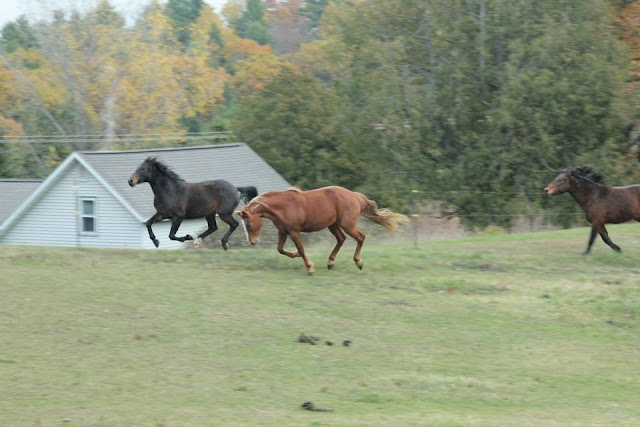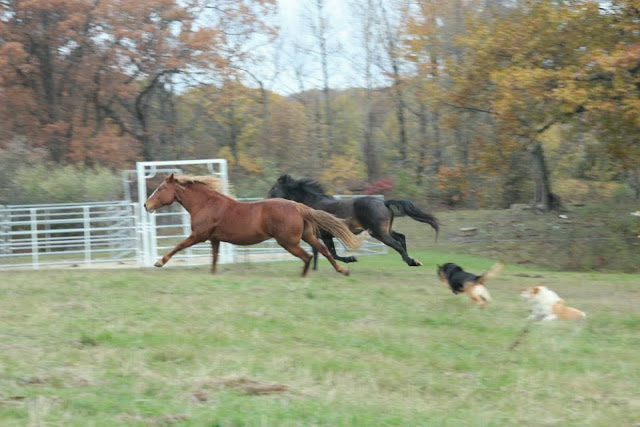A good wine is balanced in every way. They don't all have to be the same flavor to be perfect, but it needs the right amount of tang (acidity), body (provided by your fruit), and zing (tannins). And on top of that, you can change the sweetness to suit your tastes. When I began wine-making, I thought I liked deep dry red wines like merlot, cabernet savignon, and shiraz. I knew that wild fruits that I was going to be using to make wine couldn't really taste like a red grape wine, but I was willing to experiment. I also knew that I didn't like really sweet wines, so I entered into it with the thought of making my fruit wines the way I like them.
My wine making journey began this summer. A friend of mine gave me a book on making homemade wines as a thank you for hosting her wedding on our land. I had helped her pick fruit for wines (and taste a few wines) in the past, but I wasn't ready to begin for myself then. The right circumstances had to present themselves. Mid-summer, I was home for a week vacation and was presented with a bounty crop of wild black raspberries on our land (we also call them black caps). I was also desperate for a way to connect to the land and grown crops again, since I'd started my fourth year of school, which meant I was in clinical rotations all summer and wasn't able to grow a garden and was only home on certain weekends. Wine making became a perfect hobby to become involved with to bring me back to the land. All the fruits I've used were harvested either wild on our land or directly from local growers (cranberries).
Wine recipes are by the gallon. One gallon makes 5 bottles of wine. When I first started, I wondered how I was ever going to drink all this wine. I'm not really a big drinker. I often open a bottle of wine to enjoy a glass, and the wine turns bad before I get a chance to finish the whole bottle. At this point, I don't know how I'm going to possibly be able to make enough to share with all the people I'd like to taste my wines! I'm even up to using 3 gallon carboys (which make 15 bottles at a time!).
Needless to say, I've gone from just trying it out, to researching more in depth about acidity (I even got an acid titration kit), and striving to make a deep rich wine that is balanced enough to rival those deep red merlots I used to like so much. And you know, I don't like the merlots and shiraz so much anymore. I have learned to really appreciate a fruit wine, especially since I made it myself from wild grown fruits like those tiny sour grapes, black raspberries, blackberries, elderberries and so on. My elderberry made with toasted oak chips it currently bottled and aging. I'll let you know next year how it turned out! So far, it is drinkable!
If you ever want to try a good commercial elderberry wine, I highly recommend Three Lakes Winery in Wisconsin. They do ship, so try it! They have some other really fantastic semi-sweet fruit wines. Their elderberry is sweeter than mine, though has the same flavor and is very unique. It is said that a good elderberry wine can rival a deep red grape wine. I've found our Wisconsin elderberries to lack acidity so I had to experiment to blend with other acidic fruits. My first elderberry wine is just straight elderberries and I added powdered acid blend to give it that body and zing. My second is combined with cranberries and it definitely has a zing combined with the tannins from the elderberries. I can't wait for them to finish fermenting.
That is the one difficult thing about making wine...waiting for it to be ready to drink! I of course have been sampling the wines all along the way and know how much they change from the primary fermentation with active bubbling and raw yeasty sharp flavor, to the mellowed smooth flavor of a more mature aged wine.
This last weekend, I had to make another batch of black raspberry wine. It has quickly become the favorite of the ones I've made so far. It is also the sweetest one and I want to try to fine tune it now. I used all frozen fruit picked this summer. The bulk of this wine is black raspberries, but it also had a good share of red raspberries and blackberries, with cranberries, crabapples, and raisins to balance the acidity and add tannins. I added less sugar and used yeast that had settled to the bottom of one of my other wines that is currently still fermenting slowly.
I poured boiling water with the sugar dissolved in it over the thawed berries in a stainless steel pot and let it sit overnight. In the morning, I added pectic enzyme that will help the wine clear when it reaches that point (pectin from fruit can make wine hazy, especially if the fruits were boiled). Later that afternoon, I added the yeast drawn off from my other wine, in addition to yeast nutrients. Then I poured the must (what you call the baby wine) into a food grade bucket and covered it to prevent fruit flies from weaseling their way in (fruit flies carry bacteria that will turn wine into vinegar..thankfully they are not very abundant at this time of year - this can be a hazardous process when the fruit flies are thick and they are definitely drawn to the smell of fermenting fruit!).
It took a couple days for the yeast to reproduce enough to make lots of bubbles and float the fruit pulp to the top of the bucket.
After 5 days, I poured the must through a jelly bag (a bag with a bit courser mesh might work better) to strain off the pulp.
I had to squeeze the wine out of the pulp and I think it would be better to have a bit courser mesh for this part.
I made enough wine for 4 gallons, though I did run a little short and had to use a half gallon for the last jug.
I can't figure out how to get this picture to load upright. The other one worked! It's frustrating and I edited this picture exactly the same way as the previous picture.

I usually taste it along the way and I also might add more sugar if I feel like it needs a little more sweetness when it gets close to done. I might rack it again before I bottle it, but I basically wait until there is no more fermentation occuring and the pressure inside the carboy has equalized (you can tell by the position of the airlock). Then I know I can safely bottle it without worrying about it exploding later.
The last step, I bottle it! I use recycled bottles that I've removed the labels from (hot soapy water and an SOS pad or a knife work pretty well for the stubborn ones). At first I used wine bottles with screw caps, but I graduated to using corks. I got a decent corker that makes life easier and is much more versatile than waiting for enough screw cap bottles to use.
I kept thinking I need to make labels to complete the package. I even told my mom I was going to call my wine operation "Wild Spirits Wine". My mom has also gotten into the wine making spirit.
Imagine my surprise when I opened my Christmas gift this year from my photo editing sister to find my own wine labels! She used a picture I'd painted a while back, and designed a label around it. It looks awesome! Now my wine is complete!
It is really fun to bring a bottle of my own wine to a get-tegether to share with friends and family!
Well, if being a veterinarian doesn't work out for me, I'm all set for my second career! I wonder what kind of process it takes to get a license to sell wine?
I highly recommend making your own wine. It really is a simple process, but you can make it as complicated and specialized as you want it. You won't be bored with it!
The books I started with were:
I used both books and have gleaned and combined recipes from both.
This is my very first wine recipe that I used mostly from the first book:
For 1 gallon:
4 lbs of black raspberries
8 oz of raisins
1 1/2 cups orange juice
2.5 lbs sugar
1 teas acid blend
1 teas yeast nutrient
Yeast (can't remember which variety I used)
It turned out really well, though was a little sweeter than I wanted it. Most everyone else just loves it though.































































